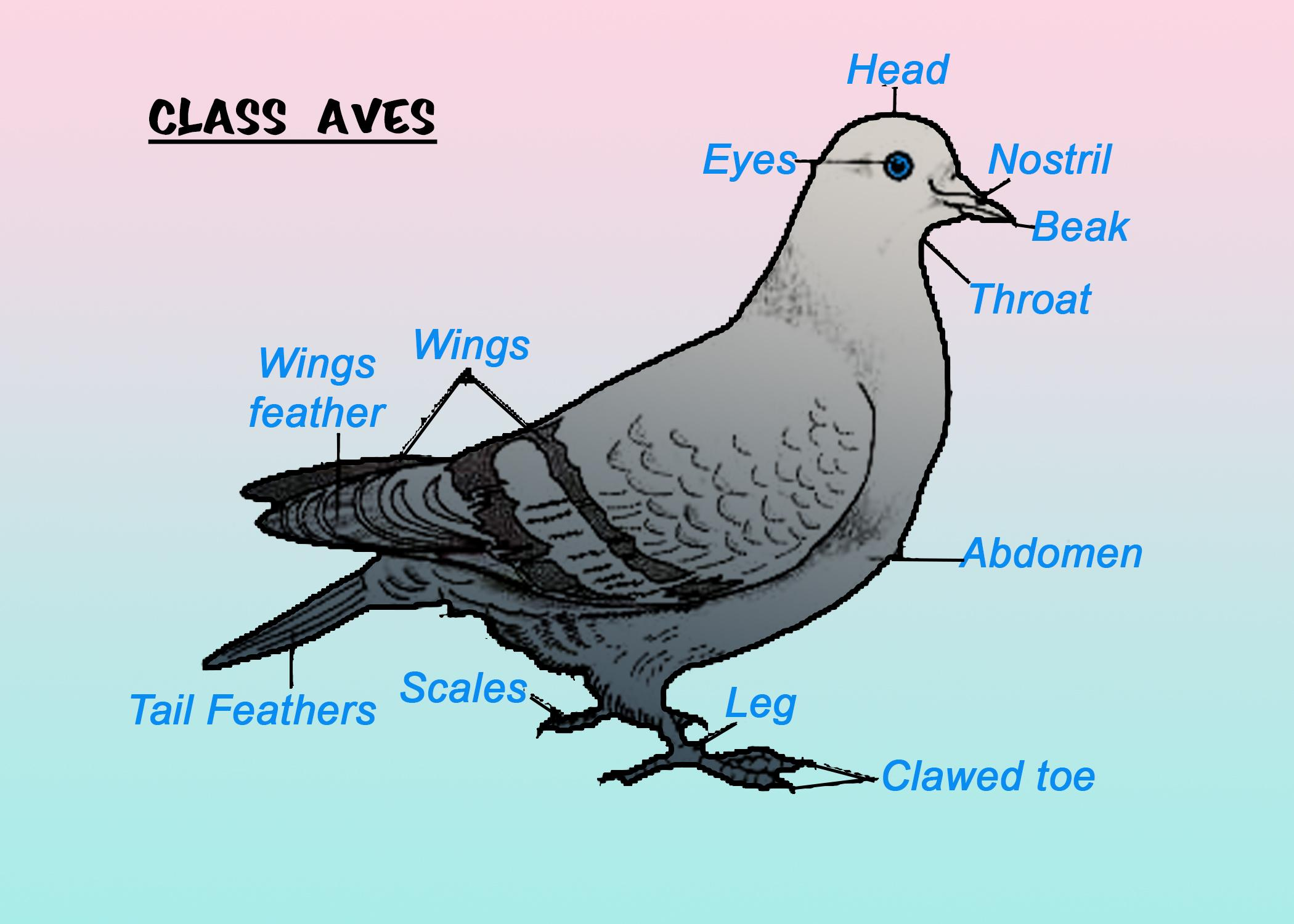
Identify the vertebrate group of animals characterized by crop and gizzard in its digestive system.
(a) Aves
(b) Amphibia
(c) Osteichthyes
(d) Reptilia
Answer
555k+ views
Hint: It is a class of vertebrates that comprises the birds' species. Birds are bipedal, feathered, and endothermic egg-laying animals. They are found worldwide, and their size ranges from 5 cm (bee hummingbird) to 2.75 m (ostrich).
Complete answer:
The digestive system of most of the aves consists of the pharynx, esophagus, crop, proventriculus, gizzard, small intestine, and large intestine. Proventriculus and gizzard are parts of the stomach. From the esophagus, food passes into the crop. It then moves into the gizzard.
Additional Information: Some of the general characteristics of class Aves the birds are :
1. Birds are bipedal feathered and warm-blooded (homoiothermic) animals i.e., they are able to maintain constant body temperature. Their fore-limbs are modified into wings. Most birds can fly except flightless birds (e.g., Ostrich). Class Aves has about 9000 species.
2. The hind-limbs are adapted for perching, walking or swimming, etc., and usually bear four, sometimes three, and rarely two toes.
3. The respiratory system can perform double respiration. In this case, air sacs are connected to the lungs, which ensure supplement respiration.
4. The upper and lower jaws are modified into the beak, which lacks teeth. Beaks are adapted to many ways of feeding; seed-crushing, fruit-scooping, flesh-tearing, nectar-sip- ping, wood-chiseling, and so on.
5. Legs are modified for walking, hopping, grasping, perching, wading, and swimming.
So the correct answer is ‘Aves’.
Note: Among the tetrapod classes, birds constitute the largest number of species. There are about 10,000 living modern bird species in the world that occupy nearly all habitats on Earth. Birds are adapted to various modes of feeding due to the modified structures of beak: fruit-scooping, seed-crushing, fish-tearing, wood-chiseling, nectar-sipping, grain-pickling, etc.

Complete answer:
The digestive system of most of the aves consists of the pharynx, esophagus, crop, proventriculus, gizzard, small intestine, and large intestine. Proventriculus and gizzard are parts of the stomach. From the esophagus, food passes into the crop. It then moves into the gizzard.
Additional Information: Some of the general characteristics of class Aves the birds are :
1. Birds are bipedal feathered and warm-blooded (homoiothermic) animals i.e., they are able to maintain constant body temperature. Their fore-limbs are modified into wings. Most birds can fly except flightless birds (e.g., Ostrich). Class Aves has about 9000 species.
2. The hind-limbs are adapted for perching, walking or swimming, etc., and usually bear four, sometimes three, and rarely two toes.
3. The respiratory system can perform double respiration. In this case, air sacs are connected to the lungs, which ensure supplement respiration.
4. The upper and lower jaws are modified into the beak, which lacks teeth. Beaks are adapted to many ways of feeding; seed-crushing, fruit-scooping, flesh-tearing, nectar-sip- ping, wood-chiseling, and so on.
5. Legs are modified for walking, hopping, grasping, perching, wading, and swimming.
So the correct answer is ‘Aves’.
Note: Among the tetrapod classes, birds constitute the largest number of species. There are about 10,000 living modern bird species in the world that occupy nearly all habitats on Earth. Birds are adapted to various modes of feeding due to the modified structures of beak: fruit-scooping, seed-crushing, fish-tearing, wood-chiseling, nectar-sipping, grain-pickling, etc.

Recently Updated Pages
Master Class 11 Social Science: Engaging Questions & Answers for Success

Master Class 11 Physics: Engaging Questions & Answers for Success

Master Class 11 Maths: Engaging Questions & Answers for Success

Master Class 11 Economics: Engaging Questions & Answers for Success

Master Class 11 Computer Science: Engaging Questions & Answers for Success

Master Class 11 Chemistry: Engaging Questions & Answers for Success

Trending doubts
What is meant by exothermic and endothermic reactions class 11 chemistry CBSE

10 examples of friction in our daily life

Difference Between Prokaryotic Cells and Eukaryotic Cells

1 Quintal is equal to a 110 kg b 10 kg c 100kg d 1000 class 11 physics CBSE

One Metric ton is equal to kg A 10000 B 1000 C 100 class 11 physics CBSE

Draw a diagram of nephron and explain its structur class 11 biology CBSE




